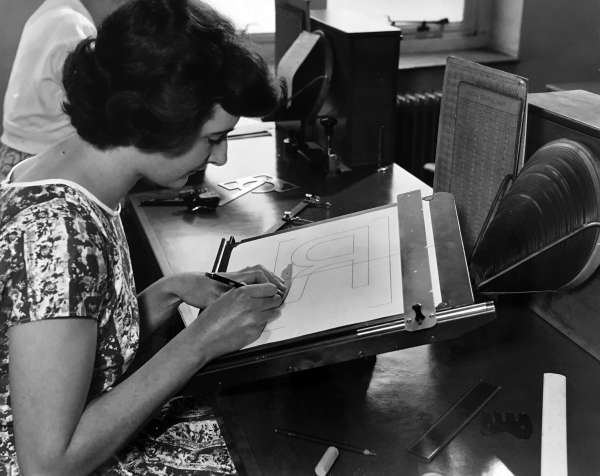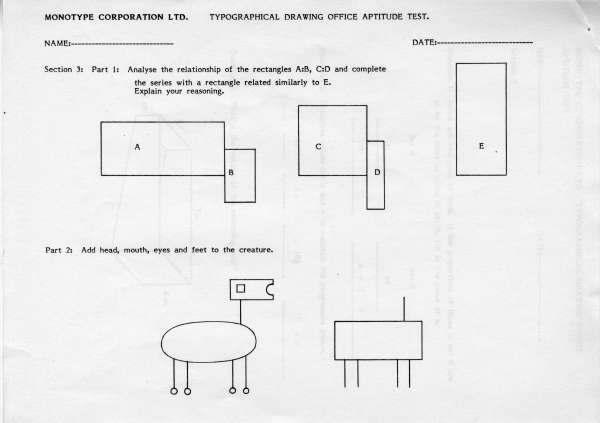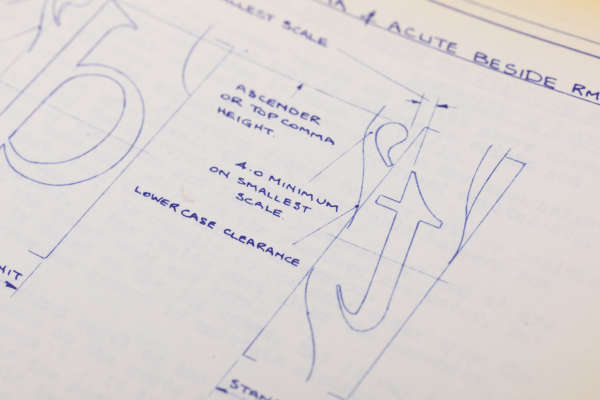The skills of a good letter drawer
What were the skills required to work in a Type Drawing Office? According to David Saunders, who supervised the Monotype TDO in the 1960s, being a drawing clerk required a logical mind, good drawing skills and an acute sense of proportions:
A certain type of intelligence was needed because they had to take other people’s drawings and interpret those for the [Monotype] system. They must not alter them significantly, they had to stick to somebody else’s concept but make it suitable for letterpress printing first of all, which had all these things of ink spread and punch striking and all the problems that all those processes cause. They didn’t have to be artists, they didn’t even have to know how to draw… As long as they had the intelligence to do that, then they really had the sort of mind that could look at a drawing and work out what to do with it, to do the necessary things.
Saunders’ description aligns with the view expounded in The Monotype Recorder in 1956 that TDO staff had to make ‘the use of critical imagination’, and ‘a most perceptive effort to interpret and realize the designer’s true intention’, as well as ‘a certain exercise of judgement — and a great deal of accumulated knowledge of type behaviour and the habits of the reading eye’.

Undated photograph of a female drawing clerk in the Monotype TDO. Courtesy of Richard Cooper

Example of a test used for recruiting new drawing clerks at Monotype, undated. © Monotype archives

Two Monotype employees working on the matrix case arrangement for a Monotype hot-metal typeface, undated. © Monotype archives

Closeup of a page from the instruction manual of the Monotype Type Drawing Office, providing instructions on accent placement and scale, 1970s. © Monotype archives